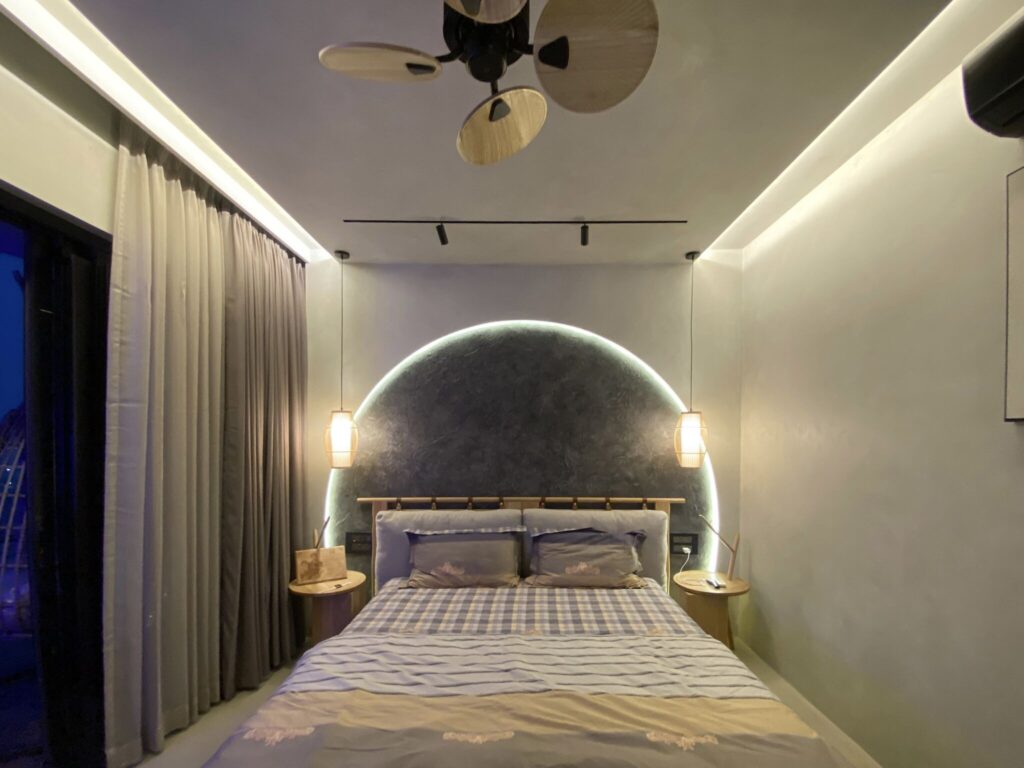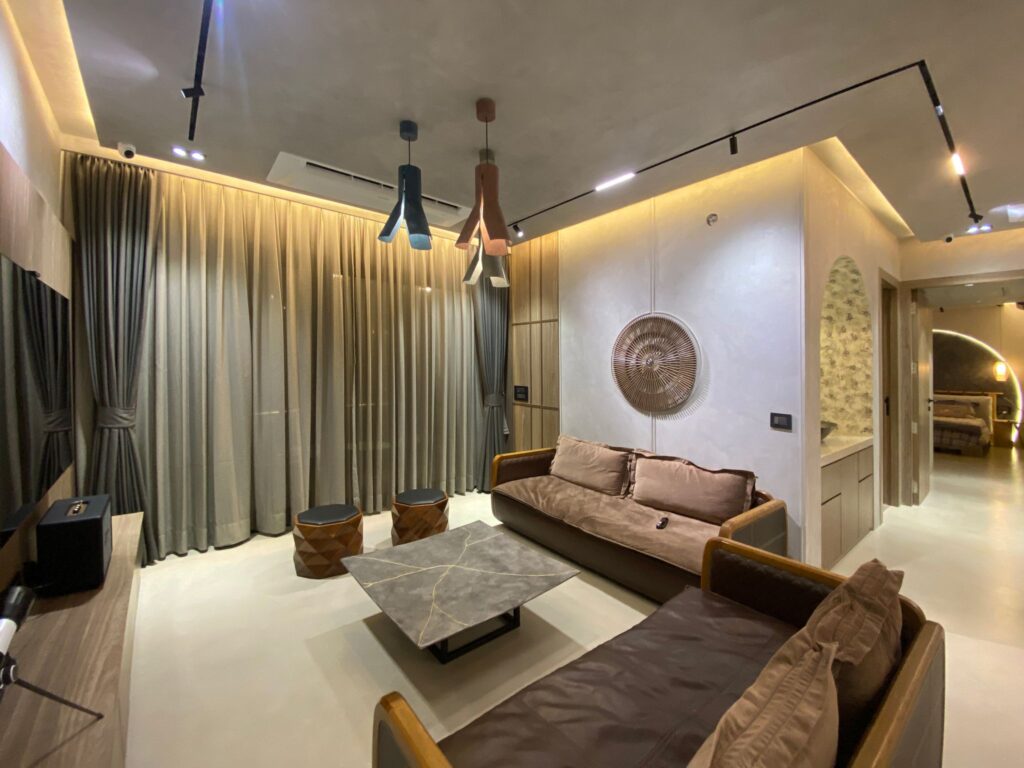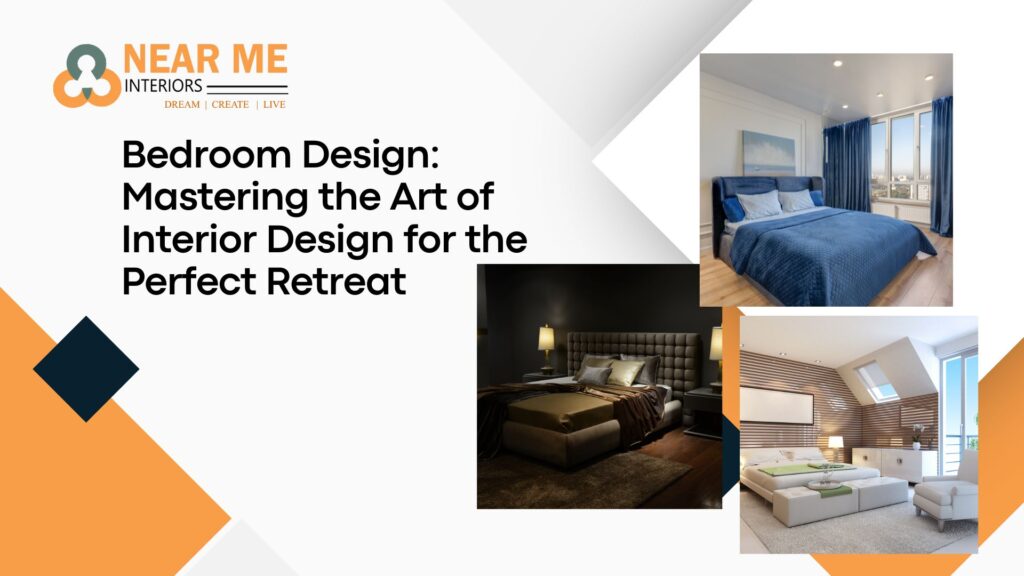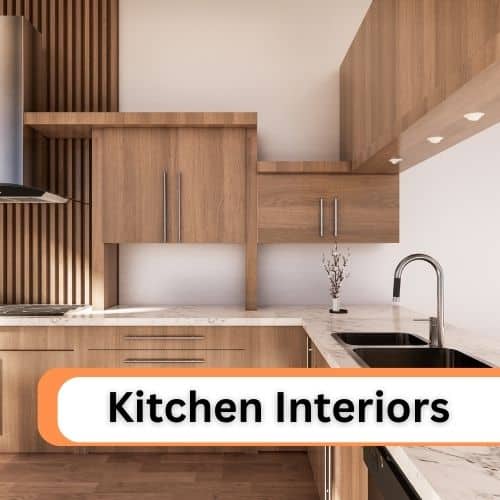The bedroom is more than just a place to sleep; it’s a personal retreat where relaxation, comfort, and rejuvenation come together. Creating the perfect bedroom design involves a balance between aesthetics and functionality, ensuring the space is both beautiful and practical. Whether you’re renovating an existing room or starting from scratch, a well-designed bedroom can significantly enhance your quality of life. In this comprehensive guide, we’ll explore various strategies to craft the ideal bedroom interior design that suits your lifestyle and preferences.
Understanding the Fundamentals of Bedroom Design
A successful bedroom design begins with understanding key design principles. It’s not just about choosing the right furniture or color palette; the layout, lighting, and materials also play vital roles in achieving a harmonious space.
1. Layout and Space Planning
The first step in creating an efficient bedroom is space planning. Begin by considering the size and shape of the room. Your furniture placement should allow for ease of movement and ensure that essential pieces like the bed, wardrobe, and nightstands are well-positioned. For small bedrooms, maximizing vertical space with shelving or built-in wardrobes can help keep the room uncluttered. On the other hand, spacious bedrooms provide the opportunity to add seating areas or a home office corner without compromising flow.

Pro Tip: A good rule of thumb is to place the bed against the longest wall or in the room’s focal point. This anchors the room and creates a sense of symmetry.




2. Choosing the Right Color Palette
Color plays an essential role in setting the mood of a bedroom. For a serene and restful environment, opt for soft, neutral tones like beige, soft grays, or pastels. These hues are known to promote calmness and relaxation. If you prefer a more dramatic or sophisticated look, deeper shades like navy blue, emerald green, or charcoal can add a touch of elegance.
Pro Tip: Accent walls are a popular design choice. Paint or wallpaper one wall with a bold color or pattern, creating a focal point without overwhelming the room.
3. Materials and Textures
The tactile elements of a bedroom—such as fabrics, rugs, and furniture finishes—are just as important as its visual aspects. Introducing varying textures can create a layered, cozy atmosphere. For example, combining soft linens, plush rugs, and smooth wood or metal finishes can give depth to your design.
For an eco-friendly and sustainable approach, consider materials like organic cotton, bamboo, or reclaimed wood. These not only enhance the visual appeal but also contribute to a healthier and more environmentally responsible living space.
Must-Have Bedroom Furniture Pieces
A well-designed bedroom isn’t complete without essential furniture pieces. While the style of furniture largely depends on your personal preferences, functionality should always be at the forefront of your choices.
1. The Bed: The Focal Point of the Room
The bed is undoubtedly the most important piece of furniture in any bedroom. When choosing a bed frame, consider both style and comfort. Sleek, low-profile platforms create a modern, minimalist look, while upholstered headboards bring a touch of luxury and comfort.
Don’t forget to invest in a high-quality mattress that suits your sleeping needs. Comfort is paramount when it comes to rest, so take the time to test out different options before making your choice.
2. Nightstands and Bedside Tables
Nightstands serve both practical and aesthetic purposes in a bedroom. Opt for bedside tables with storage to keep essentials like books, chargers, and personal items within easy reach. Matching nightstands on either side of the bed can add balance to the room’s design.
Pro Tip: For a cohesive look, choose nightstands that complement the style of your bed frame—whether it’s mid-century modern, contemporary, or traditional.
3. Wardrobe and Closet Solutions
Storage is a crucial component of bedroom design, especially in smaller spaces. A well-organized wardrobe not only helps reduce clutter but also enhances the overall look of the room. If your bedroom lacks a built-in closet, freestanding wardrobes or armoires are excellent alternatives.
For a more customized solution, consider built-in wardrobes with sliding doors, which maximize space without compromising style.



Lighting: The Key to Creating Ambiance
Lighting is often overlooked in bedroom design, but it plays a crucial role in setting the mood and functionality of the space. The best bedroom lighting plans incorporate layers of light for different purposes, from soft ambient lighting to task lighting.
1. Ambient Lighting
Ambient or general lighting is the primary source of light in the bedroom. Overhead fixtures, such as chandeliers or pendant lights, are excellent choices for creating soft, even illumination. For a more modern touch, consider recessed ceiling lights.
2. Task Lighting
Task lighting is essential for specific activities like reading or dressing. Bedside lamps or wall-mounted sconces provide focused light without being too harsh. Adjustable lamps are ideal for reading, allowing you to direct the light exactly where it’s needed.
3. Accent Lighting
Accent lighting adds warmth and character to a bedroom. Use LED strip lights under floating shelves, behind headboards, or along architectural details to highlight the room’s features. These subtle touches can elevate the design, making the bedroom feel more inviting.
Incorporating Décor and Accessories
Once the furniture and lighting are in place, it’s time to add the finishing touches with décor and accessories. These elements help to personalize the space and create a cohesive design.
1. Rugs and Curtains
A well-chosen rug can anchor the room and provide comfort underfoot. In the bedroom, opt for plush or shag rugs in soft, neutral tones. When it comes to curtains, blackout drapes are an excellent choice for ensuring privacy and promoting restful sleep.
2. Artwork and Wall Décor
Artwork plays a significant role in personalizing your bedroom. Choose pieces that resonate with you and fit the room’s overall design theme. Large-scale art over the bed can act as a focal point, while smaller pieces can be grouped to create a gallery wall.
Pro Tip: Mirrors can also serve as decorative pieces while amplifying light and making the room feel larger.
3. Plants and Greenery
Bringing nature into your bedroom through houseplants adds life and a calming vibe to the space. Low-maintenance plants like snake plants, pothos, or succulents are perfect for bedrooms as they don’t require too much sunlight or care.
Conclusion: Crafting the Perfect Bedroom Design
Achieving the perfect bedroom interior design involves careful consideration of layout, color schemes, furniture, lighting, and accessories. Whether you prefer a minimalist retreat or a luxurious, layered look, creating a space that reflects your personal style while promoting relaxation is the ultimate goal. With thoughtful design choices, your bedroom can become the serene haven you deserve.





















